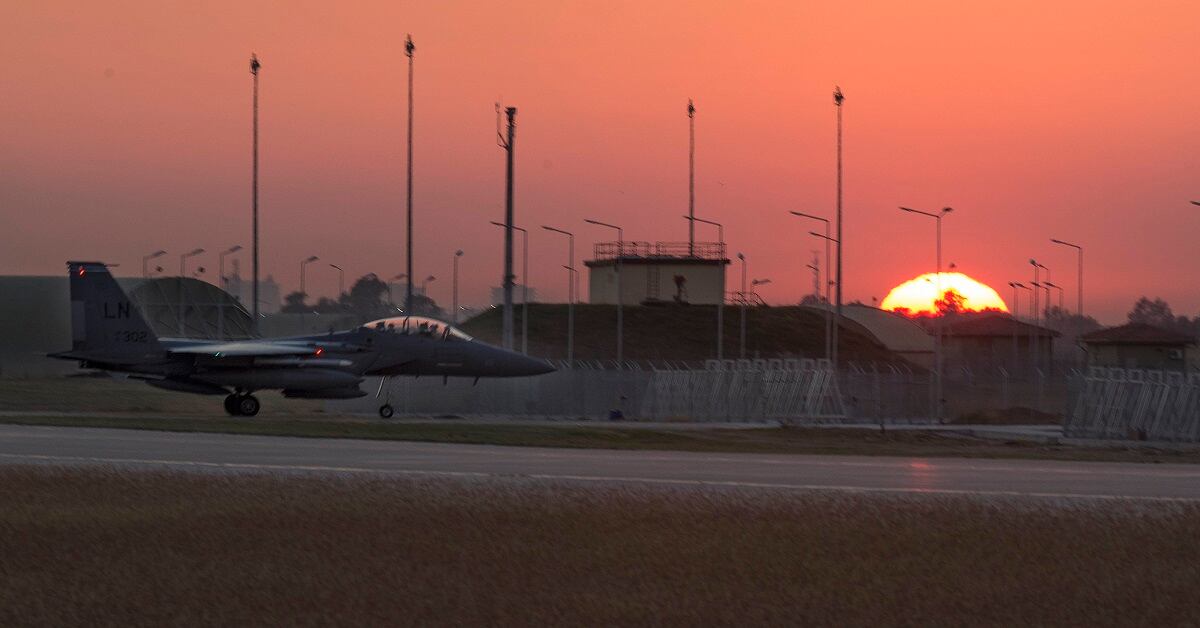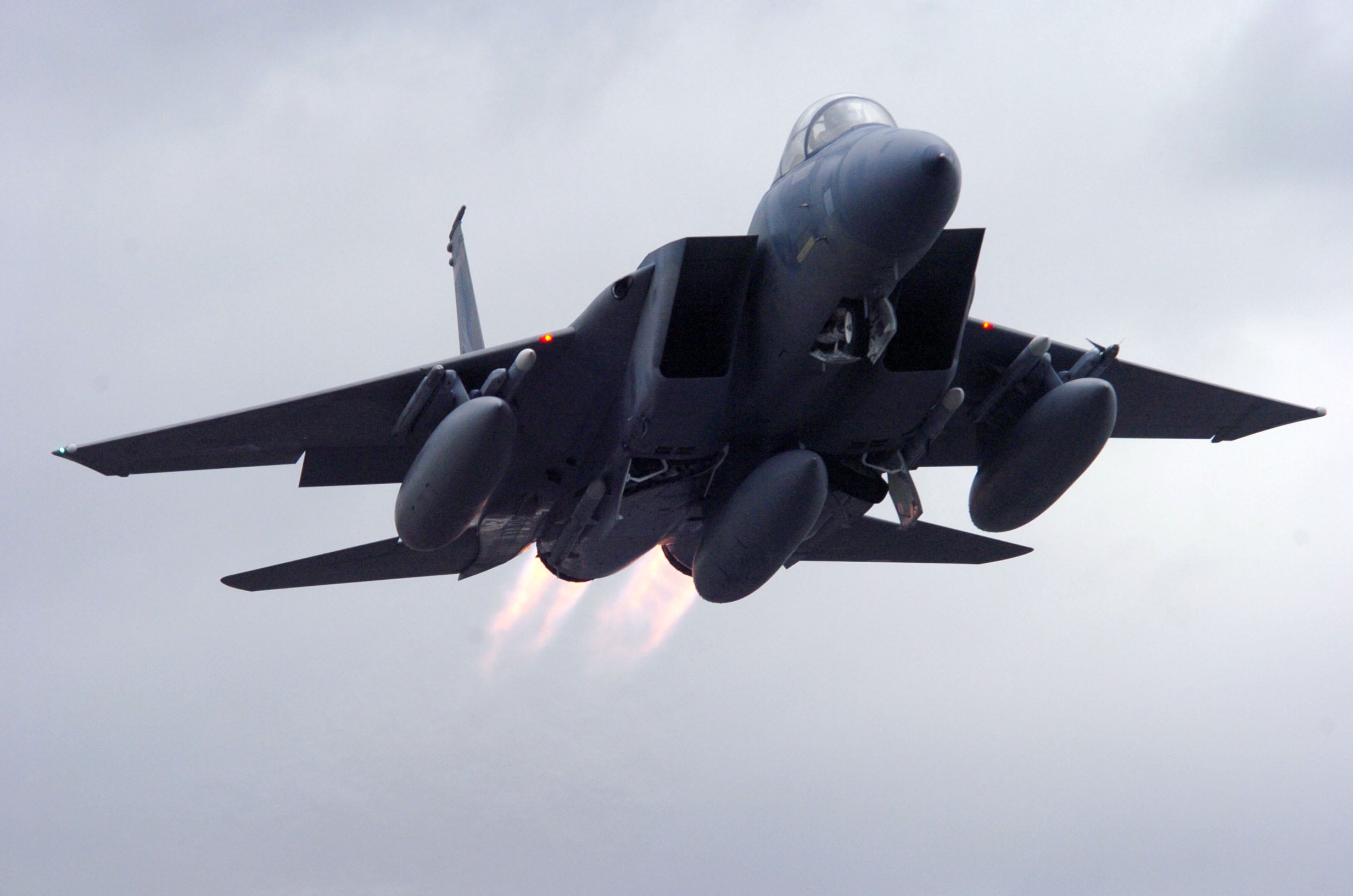The Air Force is still considering retiring many of its fourth-generation F-15 Eagle fighters — and it could happen by the end of the next decade.
Air Force officials said in March 2017 that it was considering retiring its 236 F-15 C and D fighters and replacing them with F-16 Fighting Falcons.
Lt. Gen. Jerry Harris, the Air Force’s deputy chief of staff for strategic plans and requirements, told Sen. Elizabeth Warren, D-Mass., during a Senate Armed Services air land forces subcommittee hearing Wednesday that the service is still studying its options with the F-15 ― especially as it brings the newest F-35 fighters on board.
“There’s nothing off the table,” Harris said. “We’re looking at, as we bring F-35s in, can we grow our capacity rather than just replace one-for-one? If we can’t do that, what’s our least-capable asset to retire, based on the value that it would provide for us?”

Harris said it remains unclear whether the F-15 will last until the end of the 2020s, and that it’s also looking at other older aircraft as well.
“We’re looking at our F-16s, our A-10s, and our F-15s to make sure that we have the best, capable Air Force,” Harris said. “The F-35, as a multi-role airplane, is very capable of some of the things the F-15C, the F-16 and the A-10 do.”
RELATED

Lt. Gen. Arnold Bunch, the military deputy for the Office of the Assistant Secretary of the Air Force for acquisition, said that the Air Force is continuing to conduct tests on potentially rolling the new Eagle Passive/Active Warning and Survivability System defensive program to the F-15C, as well as the F-15E.
However, the Air Force is holding off on actually installing the EPAWSS on the F-15C until it decides whether it will keep it, Bunch said. He could not give Warren a potential timeline on that decision.
“We have not closed the door on that, that [testing] is something we are doing to make sure we have that flexibility,” Bunch said.
Bunch said the Air Force will keep the F-15E Strike Eagle fleet, and is concentrating its fiscal 2019 funding on paying for upgrades to those fighters.
The generals also updated lawmakers on the Air Force’s effort to fix the alarming shortfall of pilots, especially those who fly fighter jets.
Maj. Gen. Brian Robinson, the Air Force’s assistant deputy chief of staff for operations, told Sen. Ted Cruz, R-Texas, that the service is about to start studying an aviation-only technical track, and whether that could be a solution.
The Air Force hopes the four- to six-month study would help it see if allowing pilots to concentrate almost entirely on flying ― and not other responsibilities such as leading other airmen ― would entice more aviators to stay.
Subcommittee Chairman Sen. Tom Cotton, R-Arkansas, compared such a flying-only option to the Army’s warrant officer program. The Air Force is now finalizing a report considering whether it should re-establish its warrant officer program.
Robinson said Air Force Sec. Heather Wilson set a goal of getting pilot manning levels — especially fighter pilots ― back up to 95 percent by the end of fiscal 2023.
But the Air Force is now a long way from meeting that goal.
The Government Accountability Office said in a report released April 11 that the active-duty Air Force’s fighter pilot ranks were 73 percent manned at the end of fiscal 2017, special operations pilots were 86 percent manned, and bomber pilots were 85 percent manned.
Active-duty mobility pilots, on the other hand, were overmanned at 105 percent, and active-duty surveillance pilots were 128 percent manned.
Robinson told Cruz that the Air Force may ask Congress for additional authorities or changes to policies such as pilot compensation or bonuses, if necessary to meet that goal.
But he said that of all the steps the Air Force has taken to improve retention, the most effective have been non-monetary options, such as providing pilots more input on their next assignments, or allowing them to stay in their assignments longer under the Second Assignment In-Place program.
Stephen Losey is the air warfare reporter for Defense News. He previously covered leadership and personnel issues at Air Force Times, and the Pentagon, special operations and air warfare at Military.com. He has traveled to the Middle East to cover U.S. Air Force operations.




